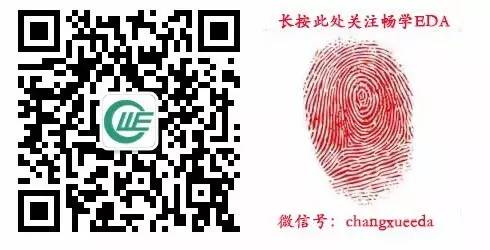1. RS-232-C is a serial physical interface standard established by the Electronic Industry Association (EIA) in the United States.
RS is the abbreviation for “Recommended Standard,” 232 is the identification number, and C indicates the revision number. The RS-232-C bus standard has 25 signal lines, including one main channel and one auxiliary channel. In most cases, the main channel is primarily used. For general duplex communication, only a few signal lines are needed, such as one transmission line, one reception line, and one ground line.
RS-232-C standard specifies a data transmission rate of 50, 75, 100, 150, 300, 600, 1200, 2400, 4800, 9600, and 19200 baud per second.
The RS-232-C standard specifies that the driver allows a capacitive load of 2500pF, and the communication distance is limited by this capacitance. For example, when using a communication cable with 150pF/m capacitance, the maximum communication distance is 15m; if the capacitance per meter of the cable is reduced, the communication distance can be increased.
The short transmission distance is another reason that RS-232 is a single-ended signal transmission, which suffers from common ground noise and cannot suppress common-mode interference. Therefore, it is generally used for communication within 20 meters.
2. The RS-485 bus is widely used when the required communication distance is tens of meters to thousands of meters.
RS-485 uses balanced transmission and differential reception, which provides the ability to suppress common-mode interference.
Moreover, the bus transceiver has high sensitivity, capable of detecting voltages as low as 200mV, allowing the transmission signal to be recovered over kilometers.
RS-485 operates in half-duplex mode, meaning that only one point can be in the sending state at any time, so the sending circuit must be controlled by an enable signal.
RS-485 is very convenient for multipoint interconnection, saving many signal lines.
Using RS-485, a distributed system can be formed, allowing for the connection of up to 32 drivers and 32 receivers in parallel.
3. The RS422 bus, like RS485, has a fundamentally similar circuit principle, both using differential transmission and reception, without needing a digital ground line.
The differential operation is the fundamental reason for the longer transmission distance under the same rate conditions, which is a fundamental difference between these two and RS232 because RS232 is single-ended input/output and requires at least three lines (a transmission line, a reception line, and a digital ground line) for duplex operation (asynchronous transmission), along with other control lines to complete synchronization and other functions.
RS422 can work in full duplex with two pairs of twisted pairs without affecting each other, while RS485 can only operate in half duplex, meaning transmission and reception cannot occur simultaneously, but it only requires one pair of twisted pairs.
RS422 and RS485 can transmit 1200 meters at 19kbps.
Using new transceiver lines, multiple devices can be connected.
In the past, communication between PCs and smart devices often relied on RS232, RS485, Ethernet, etc., mainly depending on the device’s interface specifications.
However, RS232 and RS485 only represent the physical media layer and link layer of communication. To achieve bidirectional data access, it is necessary to write communication applications, but most of these programs do not comply with ISO/OSI standards and can only achieve relatively singular functions, suitable for single device types, lacking universality.
In a device network formed by RS232 or RS485 devices, if the number of devices exceeds two, it is necessary to use RS485 as the communication medium. For devices in an RS485 network to communicate, they must go through a “master” device, which is usually a PC, and only one master device is allowed in this device network, while all others are slave devices.
Fieldbus technology is based on the ISO/OSI model, with a complete software support system that can solve bus control, conflict detection, link maintenance, and other issues.
Fieldbus devices automatically form a network without a master/slave distinction or allow multiple masters to exist.
Products from different manufacturers at the same level can be interchanged, and devices have interoperability.
1. Wiring
Good wiring can greatly reduce the impact of interference and improve communication reliability, but we often underestimate this in practice.
For example, to facilitate wiring, placing network cables in the power line trough or routing through fluorescent lights and other sources of interference is incorrect.
In fact, the interference from sources affects adjacent network cables primarily through magnetic and electric fields. According to electromagnetic theory, the induction of the interference source on the network cable is inversely proportional to the square of the distance. Thus, even if the network cable is 10 centimeters away from the interference source, the interference it experiences will be significantly reduced.
In summary, wiring should follow two principles:
Keep away from power lines, fluorescent lights, and other sources of interference;
When network cables cannot avoid power lines and other sources of interference, they should be perpendicular to the power lines and not parallel, and high-quality twisted pairs should be used.
2. Termination
Connect a 120Ω resistor.
3. Communication Rate
The speed of communication in our communication system is measured by the baud rate.
The principle we choose is:
For short distances, a higher baud rate can be chosen; for long distances, a lower baud rate should be chosen.
If a lower baud rate is chosen and it is found to be much slower than normal speed (compared to the same baud rate), it is likely that the line has been interfered with, causing frequent data verification errors and retransmissions, resulting in slow communication speed. At this point, check whether the network has taken the anti-interference measures mentioned in this article. It is also possible to increase the communication baud rate to quickly pass through the line and reduce the impact of interference.
4. Cable Selection
RS485 uses balanced (differential) lines, which have strong suppression capabilities for interference appearing simultaneously on the two signal lines DATA+ and DATA-. When the two lines are twisted together, the interference signals coupled from various distributed parameters can be evenly distributed to both lines. Therefore, for RS485’s balanced lines, using twisted pairs can achieve anti-interference capability.
Thus, it is recommended to use unshielded twisted pairs; if conditions permit, shielded twisted pairs can be used, but the shielding must be properly grounded at both ends to be effective.
If the distance is short, ordinary telephone lines can be used.
If there are multiple twisted pairs in the line, one pair of twisted pairs should be selected;
If the distance is long, the resistance of the network cable cannot be ignored. The resistance present in the network cable can cause signal attenuation, reducing the reliability of network communication.
Therefore, for longer distances, twisted pairs with thicker copper cores should be selected. Theoretically, the resistance of a wire at both ends should not exceed 80Ω.
5. Grounding
Currently, a significant number of PCs do not have their power grounded during use.
This is mainly because the power supply is not grounded, or the power outlet lacks a ground wire, resulting in a leakage voltage of often over several tens of volts between the PC’s ground and earth, which can easily introduce into the equipment, damaging the network card or communication port.
Therefore, we require PCs to have good grounding.
Ensure the normal operation of the network card or serial port device.
RS232, RS422, RS485, RJ45, what are the differences in their interfaces and respective application scenarios?
RS-232, RS-422, and RS-485 are all serial data interface standards.
RS-232 is the most widely used serial interface in communications between PCs.
RS-232 is defined as a single-ended standard for increasing communication distance in low-speed serial communication.
RS-232 adopts an unbalanced transmission mode, known as single-ended communication.
RS-232 is designed for point-to-point communication (i.e., only one pair of sending and receiving devices) with a driver load of 3 to 7kΩ.
Thus, RS-232 is suitable for communication between local devices.
RS-422 and RS-485 serial interface standards differ from RS-232 in that data signals use differential transmission, also known as balanced transmission, utilizing a pair of twisted pairs. It was relatively common in early PC communications. The maximum transmission distance for RS-422 is 4000 feet, with a maximum transmission rate of 10Mb/s.
RS-485, like RS-422, has a maximum transmission distance of about 1219 meters and a maximum transmission rate of 10Mb/s.
The length of the balanced twisted pair is inversely proportional to the transmission rate; the specified maximum cable length can only be used at rates below 100kb/s.
The highest rate of transmission can only be achieved over very short distances.
Generally, a 100-meter long twisted pair has a maximum transmission rate of only 1Mb/s.
These asynchronous serial communication interfaces are used in computer measurement and control systems. RS232C is the officially defined serial bus standard by the Electronic Industry Association in the United States and is currently the most commonly used serial interface standard for data communication between computers and between computers and peripherals.
The RS232C serial interface bus is suitable for:
Communication distances not exceeding 15 meters, with a maximum transmission rate of 20kB/s.
A complete RS232C interface has 22 wires, using a standard 25-pin plug.
RS232C uses logic, where logic “1”: -5V to -15V, logic “0”: +5V to +15V.
Disadvantages:
Slow data transmission speed, short communication distance, no specified calibrated connectors, and easy crosstalk between signals at the interface.
RS422 is a dual-ended line that transmits signals through a transmission line driver, converting logical levels into potential differences to complete the information transmission at the starting end; through a transmission line receiver, converting potential differences into logical levels to achieve information reception at the terminal.
RS422 can transmit signals over longer distances than RS232, at higher speeds, with a maximum transmission rate of 10Mbit/s. At this rate, the allowable cable length is 120 meters; if a lower transmission rate, such as 9000 baud, is used, the maximum distance can reach 1200 meters.
Each channel of RS422 requires two signal lines, where one is in the logical “1” state and the other in the logical “0” state.
The circuit consists of a transmitter, balanced connection cable, cable terminal load, and receiver.
In the circuit, only one transmitter is allowed, but multiple receivers can exist, thus typically adopting a point-to-point communication method.
RJ45 interface signal definitions and wiring arrangements for network cable connectors.
Ethernet 10/100Base-T interface:
Pin Name Description
1 TX+ Transmit Data+ (Sending Signal+)
2 TX- Transmit Data- (Sending Signal-)
3 RX+ Receive Data+ (Receiving Signal+)
4 n/c Not connected (Unused)
5 n/c Not connected (Unused)
6 RX- Receive Data- (Receiving Signal-)
7 n/c Not connected (Unused)
8 n/c Not connected (Unused)
Ethernet 100Base-T4 interface:
Pin Name Description
1 TX_D1+ Transmit Data+
2 TX_D1- Transmit Data-
3 RX_D2+ Receive Data+
4 BI_D3+ Bi-directional Data+
5 BI_D3- Bi-directional Data-
6 RX_D2- Receive Data-
7 BI_D4+ Bi-directional Data+
8 BI_D4- Bi-directional Data-
1 white/orange
2 orange/white
3 white/green
4 blue/white
5 white/blue
6 green/white
7 white/brown
8 brown/white
Note: The RJ45 interface uses differential transmission, where tx+ and tx- are a pair of twisted wires that can reduce interference when twisted together.
The differences between RS232, RS422, and RS485 communication interfaces.
RS-232, RS-422, and RS-485 are all serial data interface standards, initially formulated and published by the Electronic Industry Association (EIA). RS-232 was published in 1962, named EIA-232-E, as an industrial standard to ensure compatibility between products from different manufacturers.
RS-422 was developed from RS-232, proposed to address the shortcomings of RS-232.
To improve the short communication distance and low speed of RS-232, RS-422 defines a balanced communication interface, increasing the transmission rate to 10Mb/s and extending the transmission distance to 4000 feet (at rates below 100kb/s), allowing up to 10 receivers to be connected on one balanced bus.
RS-422 is a unidirectional, balanced transmission specification allowing single machine transmission and multiple machine reception, named TIA/EIA-422-A standard.
To expand the application range, the EIA established the RS-485 standard in 1983 based on RS-422, adding multipoint, bidirectional communication capabilities, allowing multiple transmitters to connect to the same bus while enhancing the driver capacity and conflict protection features, expanding the common-mode range, later named TIA/EIA-485-A standard.
See the table below:
Specifications:RS232/RS422/R485
Operating Mode:Single-ended/Differential/Differential
Node Count:1 Send 1 Receive/1 Send 10 Receive/1 Send 32 Receive
Transmission Cable:50 feet/400 feet/400 feet
Transmission Rate:20Kb/S/10Mb/s/10Mb/s
Output Voltage:+/-25V/-0.25V to +6V/-7V to +12V
Driver Load Impedance (Ω):3K to 7K/100/54
Slew Rate (Maximum):30V/μs / N/A / N/A
Receiver Input Voltage Range:+/-15V / -10V to +10V / -7V to +12V
Receiver Input Threshold:+/-3V / +/-200mV / +/-200mV
Receiver Input Resistance (Ω):3K to 7K / 4K (minimum) / ≥12K
Driver Common Mode Voltage:N/A / -3V to +3V / -1V to +3V
Receiver Common Mode Voltage:N/A / -7V to +7V / -7V to +12V


To help everyone learn better, Changxue Electronics Network has specially added a public account for microcontrollers and EDA, pushing related knowledge daily, hoping to assist your learning!

